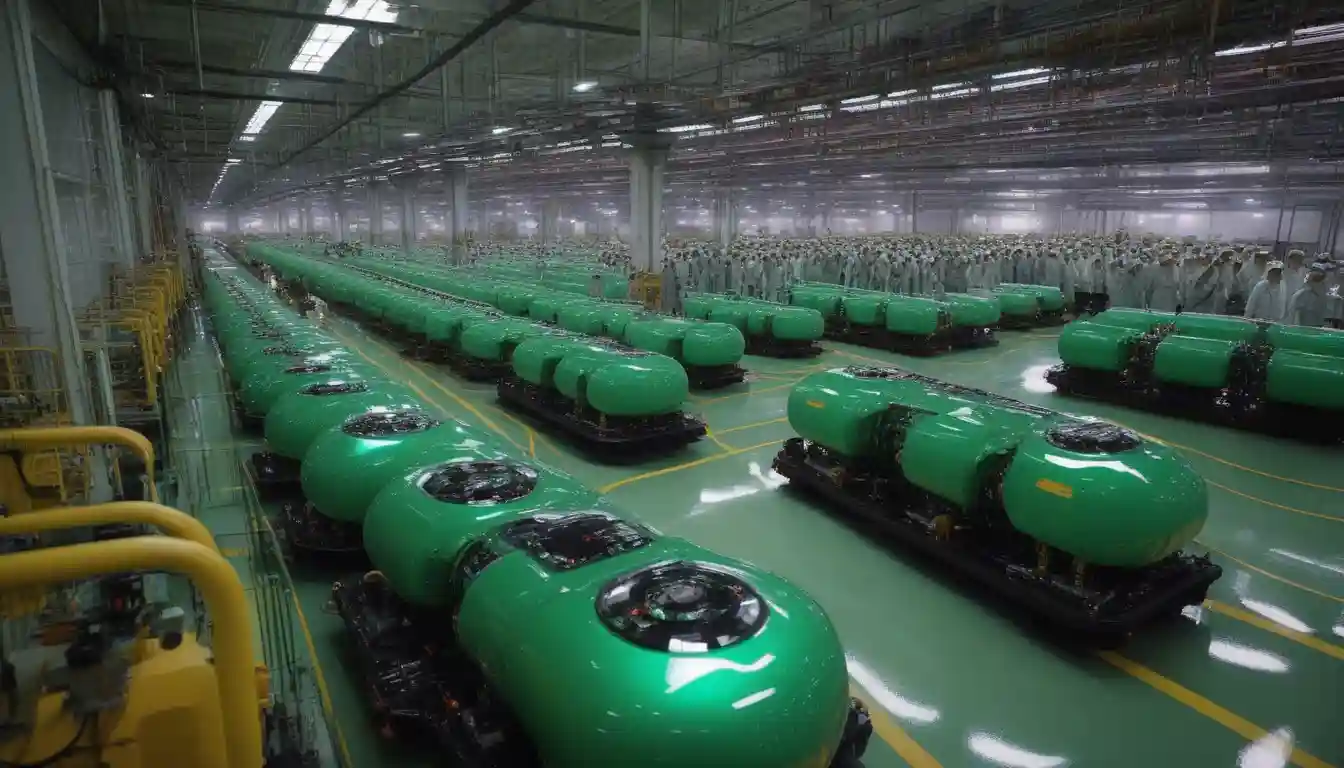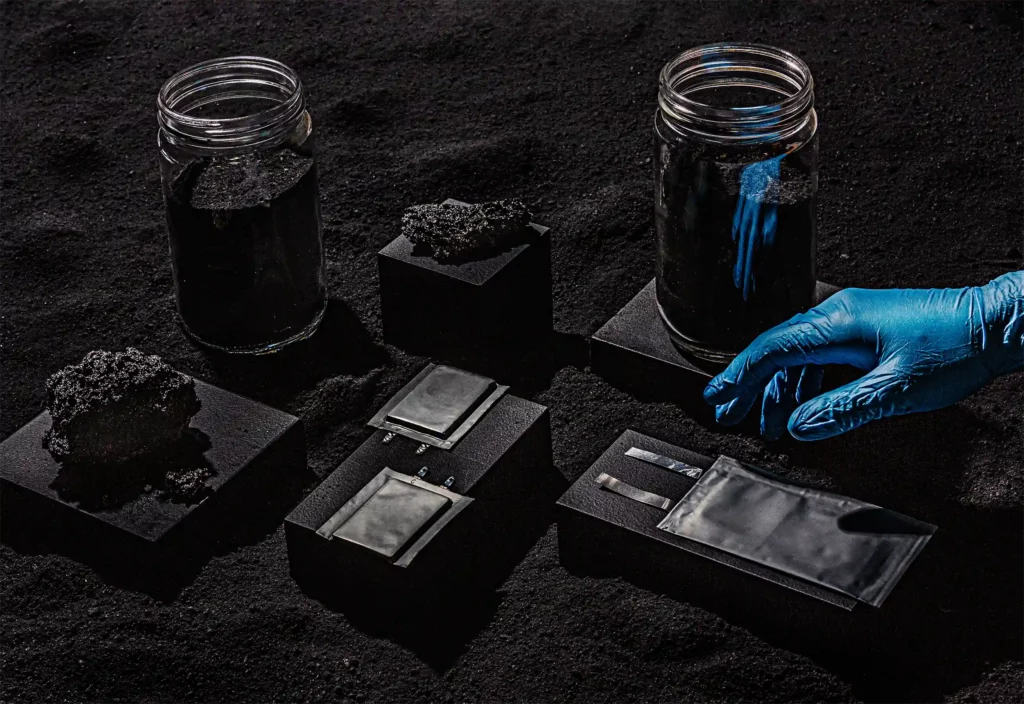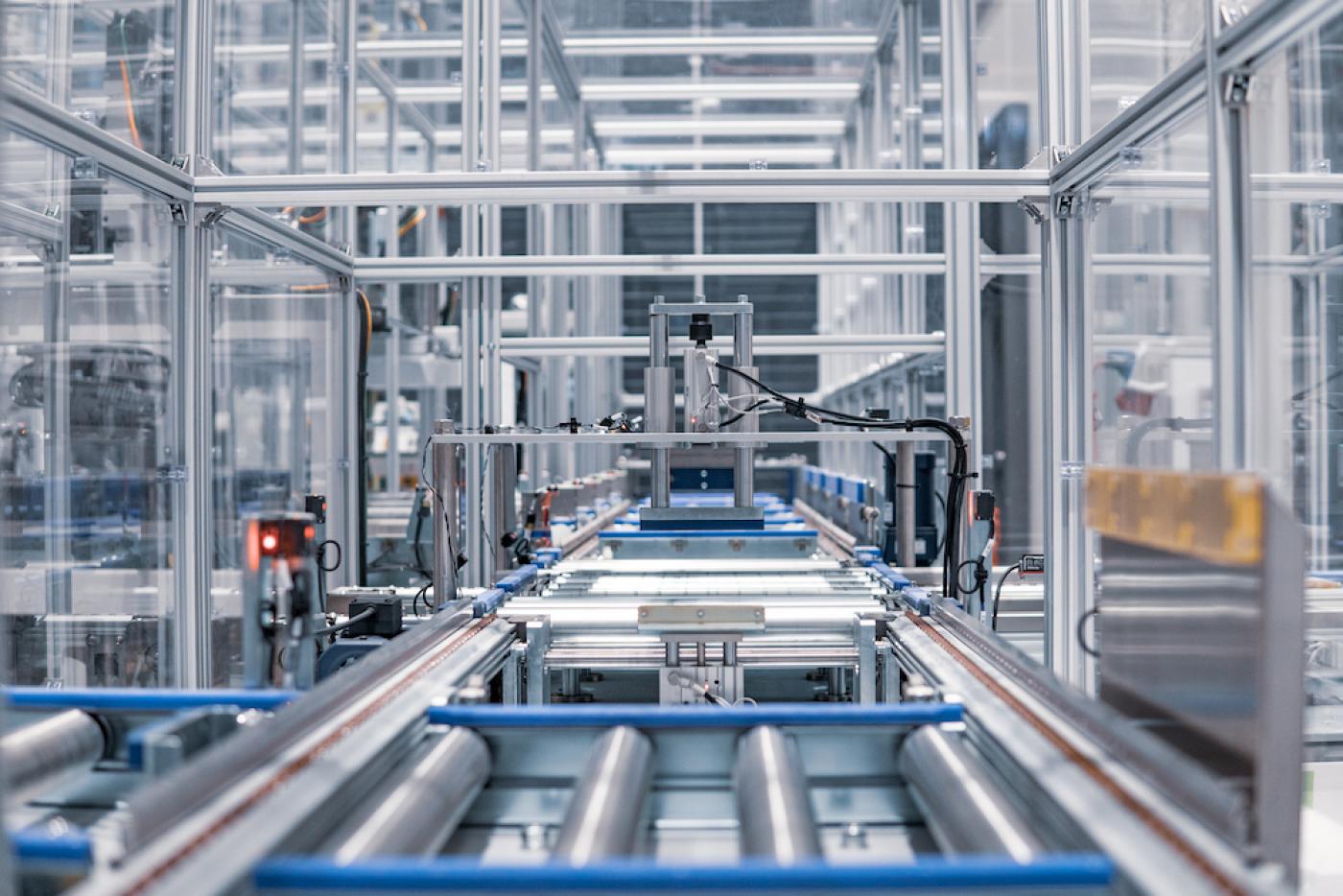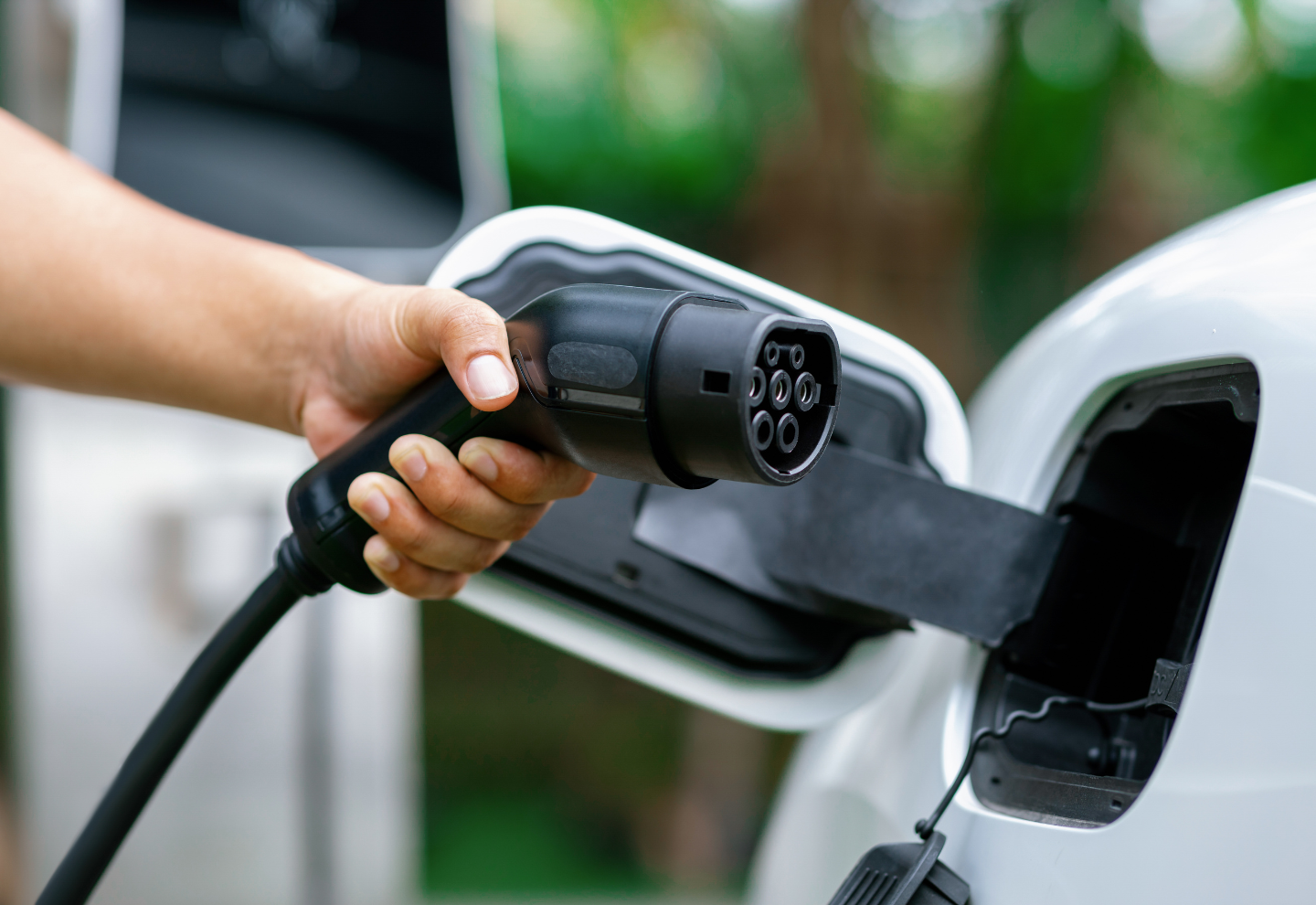
Battery Startup Group14 Raises $463 Million and Takes Full Control of South Korea Manufacturing Partner
Silicon Dreams and Battery Realities: Group14's $463M Bet on Next-Generation Energy Storage
Startup's massive funding round and South Korea acquisition signal investor confidence in advanced anode materials despite EV market uncertainties
WOODINVILLE, Washington — Group14 Technologies announced Wednesday it has closed a $463 million funding round to expand manufacturing of silicon anode materials that significantly boost lithium-ion battery storage capacity, signaling sustained investor confidence in electric vehicle supply chains despite mixed demand headlines.

The Series D round was led by battery manufacturer SK, with participation from ATL, Lightrock, Microsoft, Porsche, and pension fund OMERS. Alongside the funding, Group14 acquired full ownership of its joint venture with SK in South Korea, gaining direct control of the BAM-3 factory in Sangju province. SK previously owned 75% of the partnership.
The Washington-based startup manufactures silicon anode materials designed to replace or supplement graphite in lithium-ion batteries. Group14 currently operates three facilities: two in the United States and one in South Korea. The company declined to disclose whether the joint venture acquisition value was included in the $463 million total.
The transaction occurs against a backdrop of robust long-term battery demand. The global lithium-ion battery market is expected to grow more than 15% annually over the next decade, potentially quintupling in size according to Precedence Research, even as near-term electric vehicle sales growth has moderated in some markets.
Projected growth of the global lithium-ion battery market size through the next decade.
| Reporting Firm | 2024 Market Size (USD Billions) | 2034 Projected Market Size (USD Billions) | Projected CAGR (2025-2034) |
|---|---|---|---|
| Zion Market Research | ~65.2 | ~397 | 19.8% |
| Precedence Research | 97.88 | 499.31 | 17.69% |
| Polaris Market Research | 63.51 | 265.80 | 15.4% |
| AltEnergyMag | 75.2 | 332.5 | 15.8% |
The Silicon Paradox
The anode is the negative electrode in a battery. During discharge, it releases electrons into the external circuit and sends positive ions to the positive electrode (the cathode), which generates the electrical current to power a device.
At the heart of Group14's technology lies a fundamental materials science challenge that has vexed researchers for decades. Silicon can theoretically hold up to ten times more electrons than graphite, the dominant anode material in today's batteries. Yet this superior storage capacity comes with a destructive flaw: silicon expands and contracts dramatically during charging cycles, causing traditional anodes to crumble and fail.
Group14's solution involves creating what the company describes as a scaffold with internal voids—microscopic architecture that gives silicon room to expand without compromising the anode's structural integrity. The result, according to company claims, is a material that can improve energy density by up to 50% while enabling fast-charging times below 10 minutes.
These performance gains, if validated at scale, could address two of the most persistent barriers to electric vehicle adoption: range anxiety and charging infrastructure limitations. Industry analysts suggest that such improvements could make electric vehicles competitive with traditional combustion engines on convenience while potentially reducing battery pack costs through higher energy density.
Manufacturing Reality Meets Market Ambition
The $463 million Series D round, led by battery manufacturer SK with participation from ATL, Lightrock, Microsoft, Porsche, and pension fund OMERS, provides Group14 with the capital to scale production across three continents. The company currently operates manufacturing facilities in Washington state and South Korea, with plans to expand capacity significantly.

More strategically significant is Group14's acquisition of full ownership in its South Korean joint venture. Previously, SK owned 75% of the partnership that controls the BAM-3 factory. The buyout gives Group14 direct control over a facility already delivering commercial-scale silicon anode materials to more than 100 customers globally.
This operational footprint matters because silicon anode adoption is occurring in stages. While the technology promises transformational improvements for electric vehicles, its first commercial success has come in consumer electronics, where energy density commands premium pricing and cycle life requirements are less stringent.
Group14's materials already power millions of smartphones through partnerships with ATL, the world's largest handset battery manufacturer. Honor's Magic7 Pro line publicly incorporates Group14's SCC55 material, providing real-world validation of the technology's performance in high-volume consumer applications.
Competitive Landscape and Strategic Positioning
The silicon anode market has become increasingly crowded as investors recognize its potential to unlock next-generation battery performance. Sila Nanotechnologies, perhaps Group14's closest competitor, has secured partnerships with Panasonic and Mercedes-Benz, with production timelines that may deliver U.S. automotive applications ahead of Group14's schedule.
Major players and their strategic partnerships in a competitive silicon anode market.
| Company | Key Automotive/Strategic Partners | Market Standing/Recent Developments |
|---|---|---|
| Sila Nanotechnologies | Mercedes-Benz, BMW, Panasonic | Sila's silicon anode chemistry will be optionally available for the upcoming electric Mercedes-Benz G-Class. The company is collaborating with Panasonic to improve lithium-ion battery anodes for electric vehicles. A long-term partnership with BMW has been in place to develop Sila's silicon anode material for the automotive market. |
| Group14 Technologies | Porsche (via Cellforce Group), InoBat Auto | Group14 has been selected by the Cellforce Group, a Porsche subsidiary, as the manufacturer of advanced silicon anode material for next-generation battery cells. The company has partnered with InoBat to custom manufacture high energy density batteries for automotive applications. Group14 has also signed offtake agreements with three leading EV cell manufacturers. |
| Nexeon | Panasonic, Prime Planet Energy & Solutions (PPES - a joint venture of Panasonic and Toyota) | Nexeon has a long-term supply agreement with Panasonic to develop silicon battery cells for electric vehicles starting in 2025. The company has extended its joint development agreement with PPES to focus on the commercialization of lithium-ion batteries for e-mobility. In January 2023, Nexeon announced a partnership with BMW and Ilika to develop solid-state batteries for EVs. |
| Amprius Technologies | Airbus | Amprius has a supply agreement with Airbus for its silicon anode battery cells to be used in their Zephyr solar-powered aircraft program. |
| Enovix Corporation | Major US Automotive OEM | Enovix has a development agreement with a major US automotive manufacturer to evaluate its advanced 3D Silicon™ Lithium-Ion Batteries for electric vehicles. |
Nexeon, another significant player, is constructing manufacturing capacity in South Korea with advantaged access to silane precursors through OCI partnerships. Meanwhile, Chinese manufacturers including BTR, Putailai, and Shanshan are scaling silicon-carbon production at tens of thousands of tons annually, threatening to dominate global markets on cost outside regulatory frameworks that favor domestic supply chains.
This competitive dynamic has profound implications for Group14's strategy. The company's global manufacturing footprint—spanning Washington, South Korea, and planned expansion in Germany—positions it to serve markets where supply chain resilience and regulatory compliance matter as much as technical performance.
Recent U.S. trade policies, including restrictions on Chinese battery materials and incentives for domestic production under the Inflation Reduction Act, create additional strategic value for Group14's North American operations. Industry estimates suggest these policies could impose cost penalties of approximately $135 per kilowatt-hour on Chinese graphite anode materials, potentially improving the competitive position of alternative suppliers.
Technical Hurdles and Market Realities
Despite promising laboratory results and early commercial traction, significant challenges remain for silicon anode adoption at automotive scale. The 300% volumetric expansion that makes silicon attractive also creates complex engineering problems around binder chemistry, electrolyte stability, and manufacturing yield.
Cost considerations present another obstacle. While graphite costs approximately $5-10 per kilogram, silicon-carbon composites command prices an order of magnitude higher. The economic case for silicon anodes depends on system-level benefits—fewer battery cells needed per vehicle, faster charging capabilities, or extended range—that justify the material cost premium.
A cost comparison showing the significant price difference per kilogram between traditional graphite anode material and advanced silicon-carbon composites.
| Anode Material | Cost per kg (USD) | Year |
|---|---|---|
| Natural Graphite | $5.8 | 2023 |
| Synthetic Graphite | ~$4.74 - $8.00 | 2023-2024 |
| Silicon-based Composites | $50 - $60 | 2023 |
Group14's strategy involves offering flexibility in silicon loading, allowing customers to blend its materials with traditional graphite or replace it entirely depending on performance requirements and cost constraints. This approach may accelerate adoption by enabling gradual integration rather than requiring immediate wholesale changes to established manufacturing processes.
Investment Implications and Market Outlook
For investors and industry participants, Group14's funding success signals continued confidence in advanced battery materials despite near-term uncertainties in electric vehicle demand growth. The company's ability to attract strategic investors including battery manufacturers (SK, ATL), automotive companies (Porsche), and major technology firms (Microsoft) suggests broad recognition of silicon anodes' strategic importance.
However, the investment thesis requires careful consideration of execution risks and competitive dynamics. Group14's U.S. manufacturing timeline has already experienced delays, with the Moses Lake facility pushed from 2024 to early 2026. Meanwhile, competitors may achieve commercial automotive production earlier, potentially capturing market share in the critical early adoption phase.
The technical validation provided by consumer electronics success offers some confidence in Group14's manufacturing capabilities, but automotive applications demand higher performance standards for cycle life, safety, and consistency. The transition from smartphone batteries to electric vehicle applications represents a significant scaling challenge that will test the company's technology and operational execution.
The Path Forward
As Group14 leverages its new capital and expanded manufacturing control, the company faces the fundamental challenge of converting technological promise into sustainable commercial advantage. The silicon anode market remains in early stages, with adoption occurring gradually as manufacturers balance performance gains against cost considerations and technical risks.
Success will likely depend on Group14's ability to demonstrate consistent yield and quality at automotive scale while maintaining competitive costs. The company's global footprint provides strategic flexibility, but execution must prove that advanced materials can deliver on their transformational potential in real-world applications.

The broader implications extend beyond any single company. The race to commercialize silicon anodes represents a microcosm of the challenges facing clean technology deployment: promising laboratory results must navigate complex manufacturing scale-up, competitive markets, and regulatory frameworks while meeting the practical requirements of cost-conscious consumers and risk-averse automotive manufacturers.
For the electric vehicle transition to achieve its full potential, innovations like Group14's silicon anode technology must prove they can deliver both superior performance and economic viability at scale. The company's $463 million funding round provides the resources to pursue that goal—now comes the harder task of execution in an increasingly competitive market where technical excellence alone may not guarantee success.
House Investment Thesis
| Aspect | Key Information & Analysis |
|---|---|
| Market Reality | • Early Adoption: Silicon anodes are ~1.9% of 2024 shipments; dominated by graphite ( • Policy Tailwinds: U.S. FEOC rules (2024+) and AD/CVD duties on Chinese graphite ( • China's Role: Chinese players (BTR, Putailai, Shanshan) are scaling fast and will be hyper-competitive on cost outside of IRA/FEOC-constrained programs. |
| Group14 Business | • Product: SCC55 silicon-carbon composite, a drop-in graphite replacement. Claims ~50% energy density uplift and fast charging. • Capital/Footprint: Closed $463M Series D (Aug 20, 2025); total raised >$1B. Acquired 100% of BAM-3 JV in Korea (~10 GWh capacity). • Traction - CE: Shipping at volume to ATL (world's largest handset-battery maker); in HONOR Magic7 Pro. Solid, recurring revenue. • Traction - EV: BAM-3 began deliveries (Sep 2024); 100+ customers sampling. Pre-SOP, no auto revenue yet. • U.S. Timeline: Moses Lake plant slipped to early 2026. • IP: 2024 trade secret case against Nexeon was dismissed with prejudice. |
| Competitive Landscape | • Sila: Closest to U.S. auto SOP. Moses Lake plant commissioning; H2'25 production target. Panasonic/Mercedes deals. Likely beats Group14 to U.S. series production. • Nexeon: Asia-proximate auto entry. Korea plant with OCI silane; Panasonic supply points to 2025 deliveries. • China Incumbents (BTR, etc.): Cost/scale leaders. Will dominate volume and price outside of IRA/FEOC constraints. • OneD: Setback; shuttered Moses Lake pilot in 2025. • NanoGraf: Niche in defense/consumer electronics; building Michigan plant. |
| Tech & Cost Constraints | • Physics Challenges: High volume expansion, unstable SEI, and high first-cycle loss constrain scale. Solvable with nanostructuring, binders, and prelithiation. • Cost: Graphite is $5–10/kg; Si-C composites are $50–75/kg. Value is in system savings (higher Wh/L, faster charge) justifying the premium. • Supply Chain: Silane precursor availability and cost are key risks. |
| Investment Thesis | Why It Can Work: 1. Proven CE volume with ATL/HONOR validates manufacturability. 2. Global footprint (Korea, U.S., Germany) is a moat in a fragmented, policy-driven world. 3. Strong balance sheet (>$1B raised) removes near-term capex risk. Key Risks (Conservative View): 1. Auto SOP Timing: U.S. revenue likely in 2027; behind Sila/Nexeon by ~12-18 months. 2. Unit Economics: Gross margins pressured until high loading and stable yields are achieved. 3. China Competition: Chinese players will undercut on price outside protected markets. |
| Diligence Checklist | • Revenue Proof: CE purchase orders and auto SOP timelines by program. • Process/Yield: First-pass yield and irreversible capacity loss (ICL) data from BAM-3. • COGS: $/kg vs. $/kWh saved analysis; capex intensity per kg of capacity. • Regulatory: Confirm FEOC compliance for U.S. IRA credits. • IP: Freedom-to-operate analysis post-Nexeon case. |
| Potential Catalysts | Upside: Named auto SOP for 2026; >25-30% Wh/L improvement at pack level; prelithiation at scale. Downside: Further U.S. schedule slippage; China price shock from new capacity; yield issues forcing lower silicon loading. |
| Bottom Line | • Market: Massive, staged adoption (blends first). Policy creates regional winners. • Group14: Category leader in CE with a credible EV pipeline, clean governance, and ample cash. EV revenue is a 2026-2027 story. • Competition: Sila/Nexeon likely first to auto SOP (2025). China owns cost leadership where policy doesn't apply. • Valuation: A late-stage investment requires proof of auto SOPs, high yields, and a path to >30% gross margins. Otherwise, it carries A-/B-round equivalent risk. |
NOT INVESTMENT ADIVCE